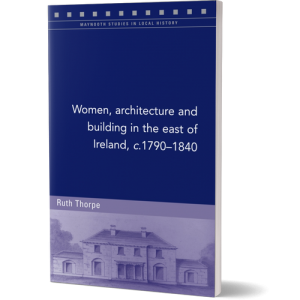Until the 20th century, the world of architecture and building was considered a male domain, but long before this, women of the landed class in Ireland were designing, commissioning and supervising projects. Focusing on several women in the eastern counties, this study discovers how they came to develop an interest in architecture and the skills to express it. It investigates the relationship between the publication of an architectural pattern book by Lady Helena Domvile and her re-building of Santry village, Co. Dublin. We trace the fortunes of Anna Maria Dawson through her architectural sketches, from the planning of her brother’s neoclassical house, Townley Hall, Co. Louth, to her patronage of its architect, Francis Johnston, and her own designs for more modest homes in counties Armagh and Down. Many elite women combined a sense of moral, social and religious duty with a passion for designing and building, resulting in philanthropic projects such as schools, cottages and almshouses. Recovering their role as architectural amateurs allows us a greater understanding of their lives and the buildings of this period.
Part of the Maynooth Studies in Local History series (Raymond Gillespie, series editor)
Ruth Thorpe is a graduate of Trinity College Dublin, holds an MA in Historic House Studies from NUI Maynooth and is undertaking a PhD in history at Queen’s University Belfast.
| Details | |
| Author | Ruth Thorpe |
| Publisher | Authors Stock |
| Publication Data | 100 Illustrations 234 x 156mm 128pp |
| Subjects | History, Art |
Women, architecture and building in the east of Ireland, c.1790–1840
- ISBN: 978-1-84682-400-5
- Author(s): Ruth Thorpe
- Availability: In Stock
-
€10.00
Related Products
The High Fortress,
The Rock of Dunamase,The ruins of an Anglo-Norman fortress built over an Early Christian Irish dún, ..
€15.00
Boyne and Beyond
Essays in Appreciation of George Eogan.The UNESCO World Heritage site of Brú na Bóinne in the Boyne ..
€17.99
IMIRCE
MIGRATION AND IRELAND THROUGH TIME.Proceedings of the 6th National Monuments Service annual archaeol..
€20.00
TRACES
THE ARCHAEOLOGY OF SMALL THINGS. Proceedings of the 7th National Monuments Service annual archa..
€17.99
Tags: Women, architecture and building in the east of Ireland, c.1790–1840



-80x80.jpg)


